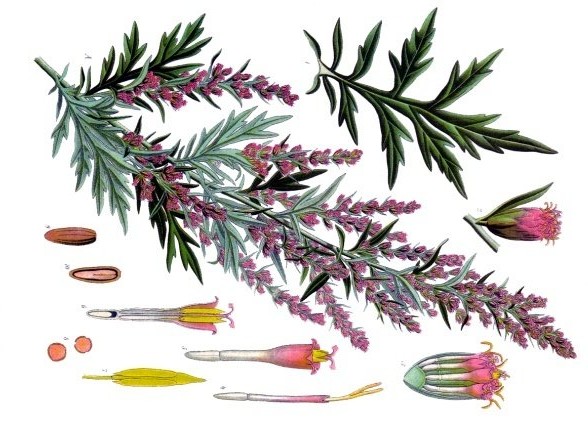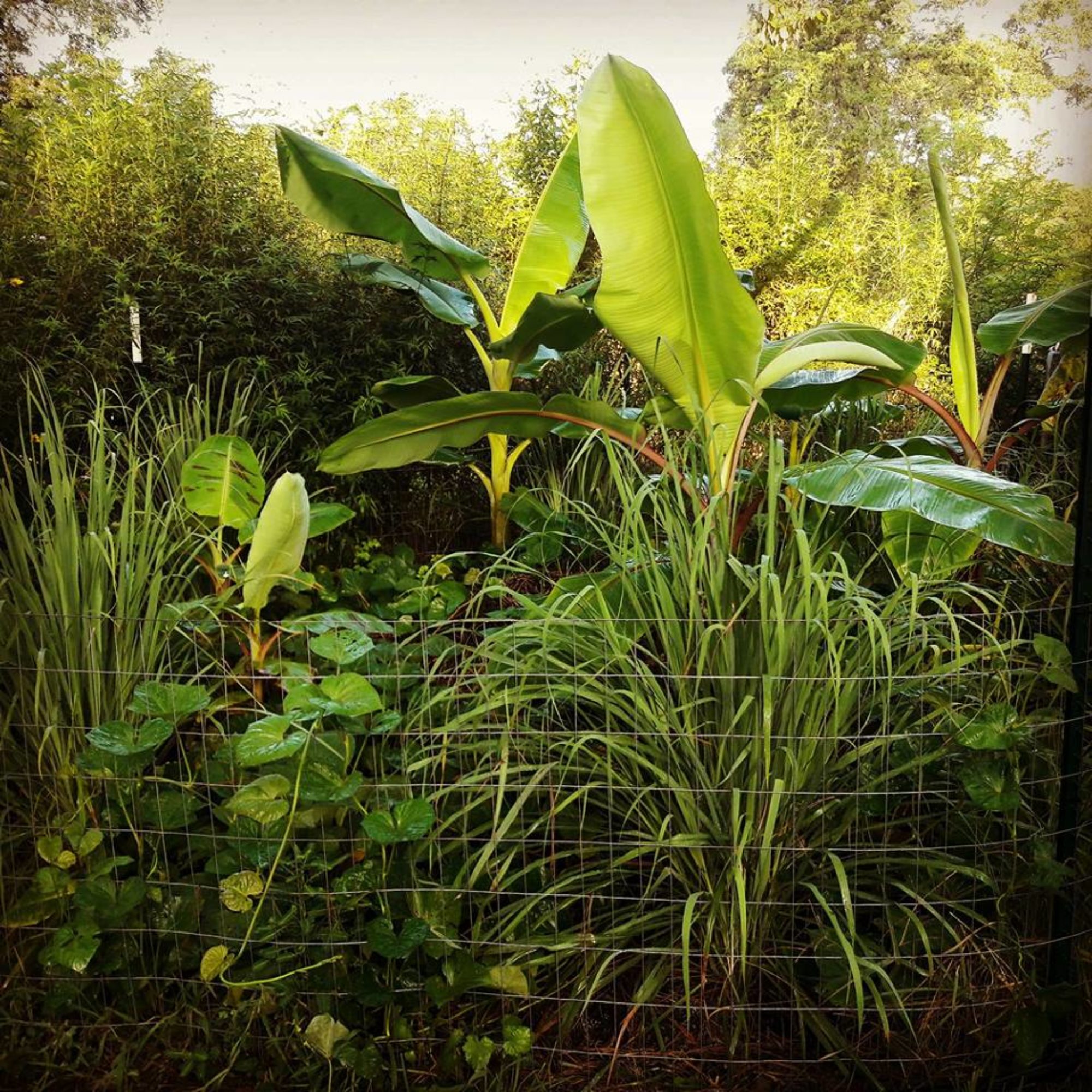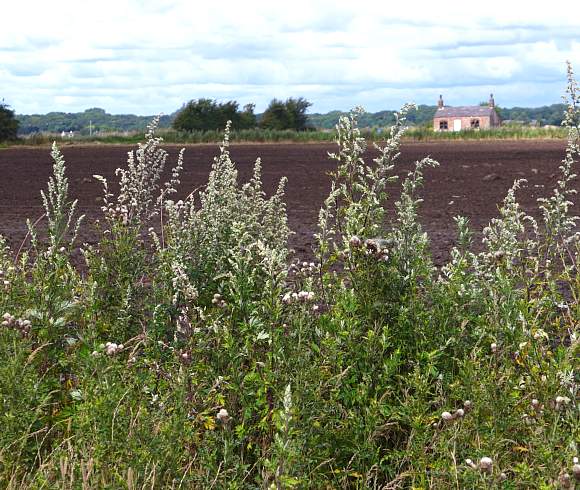Mugwort – A Magical Herb with Many Uses!
Mugwort is an herb with an ancient past. Anglo-Saxon tribes believed this was one of 9 sacred herbs given to us by the gods. It was used as a flavoring for beer long before the tradition of using hops. It was considered magical, protecting weary travelers against exhaustion. In fact, Romans planted it along roadsides for this reason. It was also used by travelers to put in their shoes to relieve aching feet.
John the Baptist was said to have worn a girdle of mugwort when he went out to the wilderness.
It has also been used to induce prophetic and vivid dreams when the herb is placed near the pillow. It’s been used in Pagan ceremonies on the summer solstice to ensure protections for the coming year.
Mugwort can be drank as a tea, smoked, simply smelled or prepared as a medicine. It also has many uses in the landscape as well, as we’ll discuss a bit later!
Types of Mugwort
Mugwort is the common name given to the Artemsia genus, which includes many varieties of mugwort.
- Artemisia argyi is known as silvery wormwood or Chinese mugwort and is used primarily in traditional Chinese medicine.
- Artemisia princeps is also used in Chinese medicine but is from Japan & Korea
- Artemisia douglasiana is known as Douglas mugwort or California mugwort and is native to the western United States.
- Artemisia vulgaris is known as common mugwort is as a culinary and medicinal herb used throughout the world.
There are many other varieties you may look into if you like, but we will focus on vulgaris today.
Uses in Medicine
Mugwort has a long list of uses. According to WebMD, it is used for stomach and intestinal conditions like colic, diarrhea, constipation, cramps, weak digestion, worm infestations and persistent vomiting. It also stimulates gastric and bile productions, used as a liver tonic, to promote circulation and as a sedative. Due to the sedative effects, it is useful in the treatment of hysteria, epilepsy and convulsions in children. Some women take mugwort to regulate their cycle and other menstrual problems.

It’s also been known to help with psychoneuroses, fatigue, depression, hypochondria, irritability, restlessness, insomnia and anxiety. It can help to relieve itching on skin from burns.
Mugwort is known to kill parasites, improve memory, stimulate hormones, calm nerves, and warm the body. It also can be used as a poultice to fight infections, a gargle for sore throats and a wound wash. It can also help repel insects!
Herbal Actions
For an explanation of what herbal actions are and a fairly comprehensive list of each action and what it does, click here.
- Nervous System Tonic
- Diaphoretic
- Nervine
- Emmenagogue
- Anti-bacterial
- Anthelmintic
- Bitter
- Digestive
- Choleretic
- Diuretic
Recipe!
Mugwort recipes are super easy. Since they’re so easy, here are a few uses:
- Coat skin with mugwort juice prior to exposure to poison ivy to prevent rash.
- Chew fresh leaves to relieve fatigue and clear the mind.
- Make a tea with fresh leaves for chronic stomach aches or to stimulate your appetite.
- Make a tea with dried leaves and flowers to help expel pinworms.
- Mix dry leaves with honey to apply to bruises or minor scrapes.
For teas, use 1 ounce per pint of boiling water. Do not steep too long or it will become extremely bitter.
Note: Do not take mugwort in increments longer than 1 week. In fact, only use for a maximum of week per month.
Uses in the Edible Landscape
Mugwort, while not native to the US, has naturalized and is sometimes considered an invasive or noxious weed. The reason is that it’s a perennial and spreads not only from seed but also by rhizome. It is difficult to pull and extremely hardy, therefore, plant with careful consideration.
That being said, there are good reasons to grow it in your garden. Besides the uses to the human listed above, the plant grows quickly and is a good choice for a chop and drop mulch plant. The flowers attract beneficial wasps that help control pests and it shades out competitive grasses and other weeds.
The silvery foliage is also a nice addition in the summer, adding another dimension to your garden.
How to Grow!
Because this is a naturalized “weed” it is extremely easy to grow. In fact, no real care is required. See below for more details.
Planting
Mugwort naturally grows along roadsides and in disturbed soil. This makes it a pioneer plant in our evolutionary landscape and we should locate it as such. The most difficult part of growing mugwort is in getting the seeds to germinate. They need a few weeks of cold stratification. This means you could either plant them directly in the ground, for germination and growth the following spring, or you could wrap in damp peat moss or coconut coir and place in the fridge for 2-4 weeks before planting out. Due to our infrequent cold spells, I would recommend the fridge method.
Plant in a dry area where they will not suffer from extended periods of standing water or wet soil. They are drought tolerant but will not persist with soggy soil for extended periods.
If you have an area you’d prefer not to mow or you don’t care if you have 4 – 6 foot foliage, this would be a great place for mugwort!
Care
No care is required, except to trim to desired height. Mugwort will grow to 6 feet in our climate so if you’d like to keep it shorter, just trim as needed. No need to water except in all but the extreme drought. However, even if plant dies back, it will return once water returns to the area.
Harvest
To harvest, simply cut the tops of the plants as needed. For dream pillows, harvest in midsummer just before flowering. For medicinal uses, harvest anytime.
Post Harvest – Curing & Storage
Dry outdoors in our climate. If too humid, bring inside and allow to dry or use dehydrator or oven on warm with door open. Will dry fine without any heat in a dry environment.
Propagation
Besides the aforementioned seed propagation, mugwort may also be propagated through cuttings. Take cuttings in the fall. Look for pencil width stems and cut just below a pair of leaf nodes. Dip in rooting solution and place in perlite or similar rooting medium. Spray daily with a water bottle or place under intermittent mist. Keep out of direct light. Cutting should be rooted within a few weeks and ready for transplant.

That’s all about mugwort! What do you have to say about mugwort? Do you grow it? How do you use it?
For more information about Texas Edible Landscapes or to set up a consultation for your own property, Click Here!
[TheChamp-FB-Comments]

